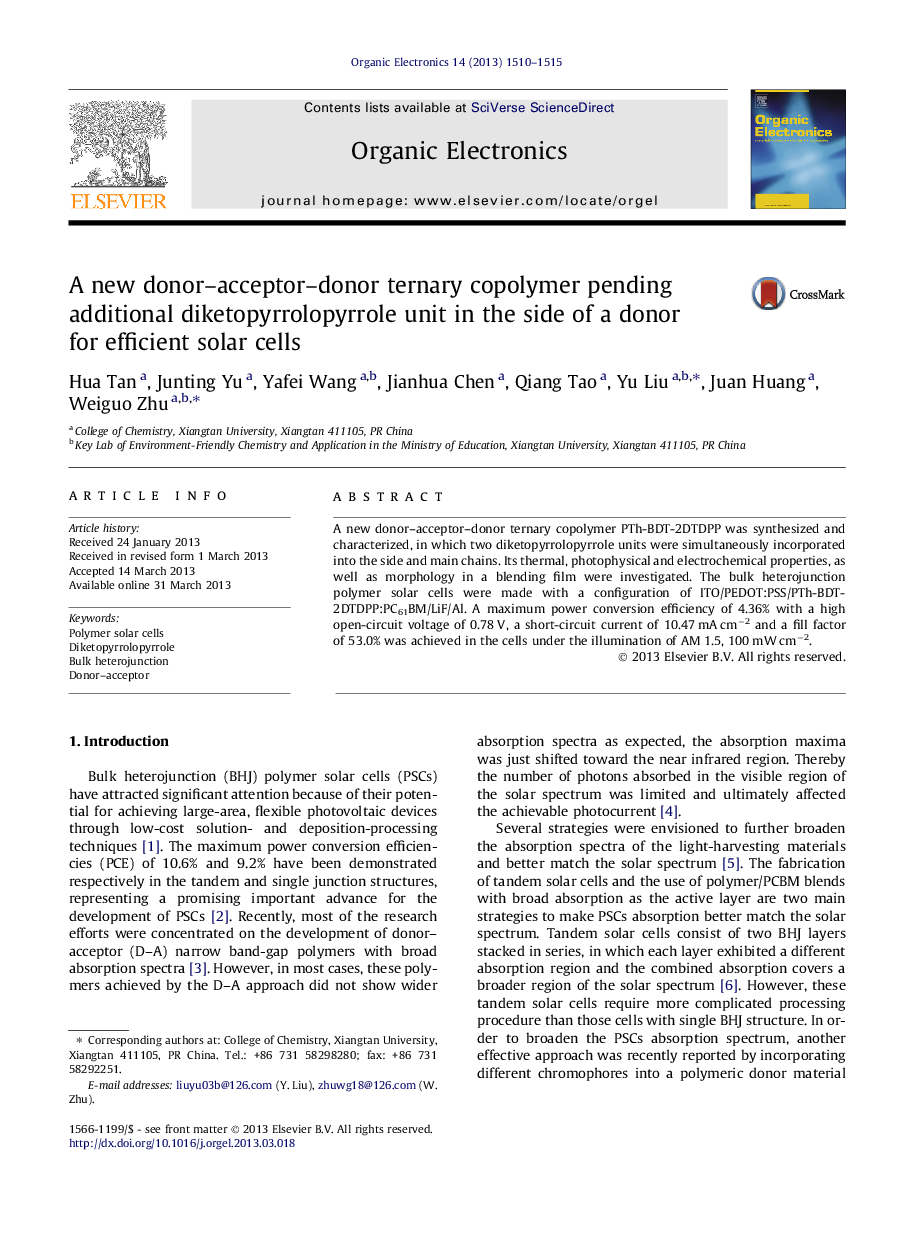| Article ID | Journal | Published Year | Pages | File Type |
|---|---|---|---|---|
| 1264511 | Organic Electronics | 2013 | 6 Pages |
Graphical abstractA new donor–acceptor–donor ternary copolymer PTh-BDT-2DTDPP pending additional diketopyrrolopyrrole unit in the side of a donor unit has been synthesized and characterized. The bulk heterojunction polymer solar cells with an active layer of PTh-BDT-2DThDPP and PC61BM showed a high power conversion efficiency of 4.36%.Figure optionsDownload full-size imageDownload as PowerPoint slideHighlights•The D–A–D ternary copolymer with diketopyrrolopyrrole side chain was synthesized.•This ternary copolymer exhibited a broad absorption spectrum from 300 nm to 850 nm.•This ternary copolymer showed a decreased HOMO energy level of −5.31 eV.•The made bulk heterojunction solar cells displayed improved photovoltaic properties.•The maximum power conversion efficiency of 4.36% was observed in these solar cells.
A new donor–acceptor–donor ternary copolymer PTh-BDT-2DTDPP was synthesized and characterized, in which two diketopyrrolopyrrole units were simultaneously incorporated into the side and main chains. Its thermal, photophysical and electrochemical properties, as well as morphology in a blending film were investigated. The bulk heterojunction polymer solar cells were made with a configuration of ITO/PEDOT:PSS/PTh-BDT-2DTDPP:PC61BM/LiF/Al. A maximum power conversion efficiency of 4.36% with a high open-circuit voltage of 0.78 V, a short-circuit current of 10.47 mA cm−2 and a fill factor of 53.0% was achieved in the cells under the illumination of AM 1.5, 100 mW cm−2.
